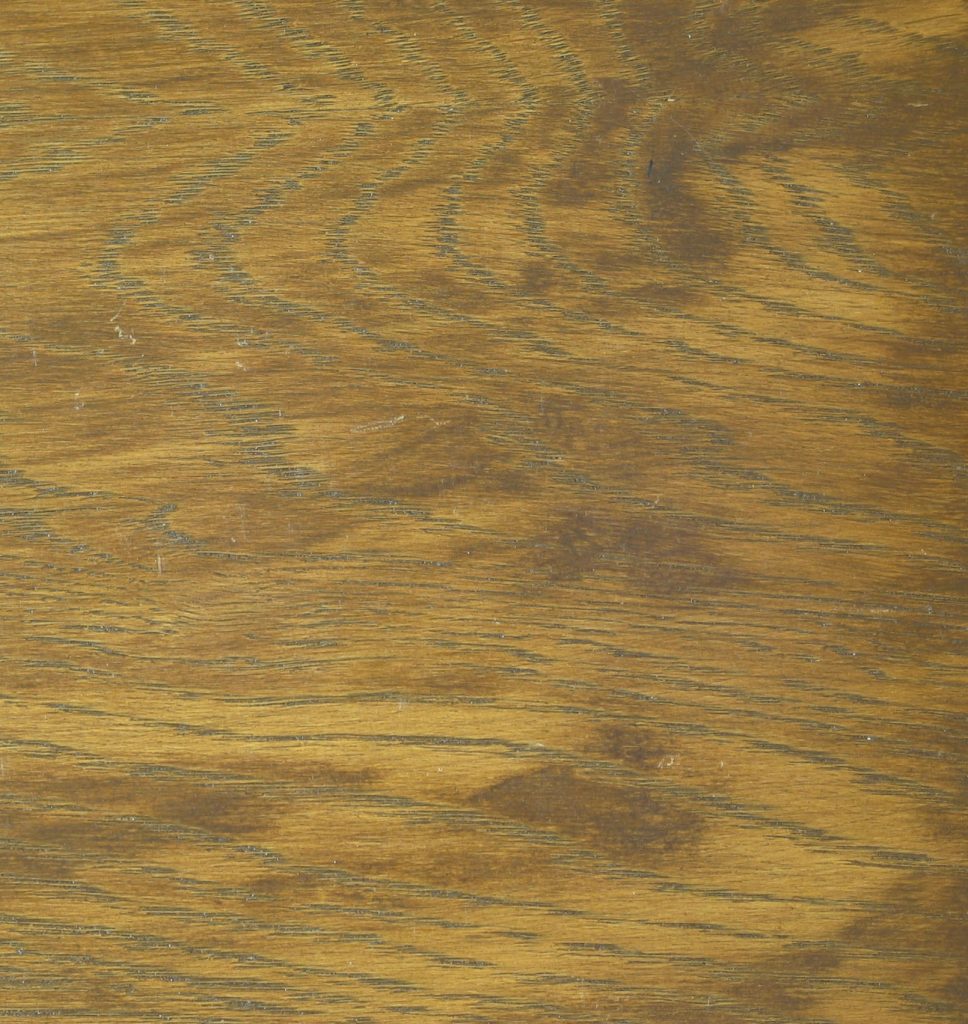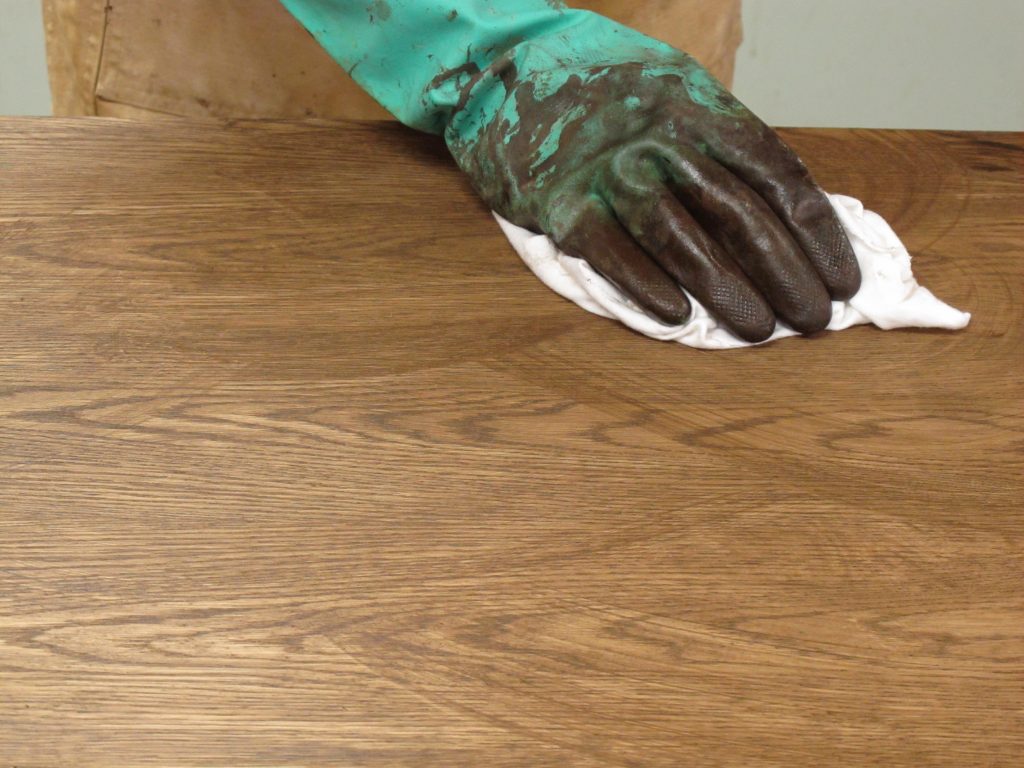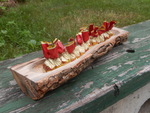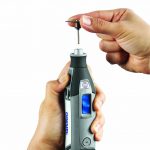We may receive a commission when you use our affiliate links. However, this does not impact our recommendations.

This is blotching from a lacquer stain drying too fast. Oak doesn’t blotch.
A lot of woodworkers avoid staining whenever possible because of the problems that can occur. Instead of staining, they use a beautiful wood that gives the color they want to begin with.
Most think of blotching as uneven coloring in the wood caused by stain penetrating deeper in some areas than others. Most tight-grained woods and softwoods have a natural tendency to blotch.
Blotching can also be caused by the stain itself, however, and how it is applied no matter what wood is used.
The basic application rule for getting an even coloring when staining wood is to apply a wet coat everywhere and wipe off the excess before the stain dries. If the wood doesn’t have a natural blotching tendency, you’ll get an even coloring every time.
But two common stains dry so fast that it’s often difficult to get the excess wiped off before the stain dries, especially in hot temperatures. These are lacquer stains and water-based stains.
Lacquer stains are usually available only at paint stores or distributors that target professionals. You can identify these stains by their strong, unpleasant odor and by the listed ingredients, which usually include acetone and toluene or xylene. Rarely do these stains list the all-inclusive and unhelpful “petroleum distillate” or “aliphatic hydrocarbon,” which are typical on oil stains.

Blotching in the form of streaking from a water-based stain drying before I could get it all wiped off.
Water-based stains are available everywhere and are easy to identify by the name on the can or by the instruction to use water for cleanup.
When applying one of these stains, it will help if you can divide a large project into smaller parts. It will also help to wipe or spray the stain rather than brush it. Brushing is very slow.
You may still have problems, however, getting all the excess removed before the stain begins drying. To overcome the problem get a second person to help you, one wiping or spraying the stain while the other follows wiping off the excess.
If you still can’t get the excess wiped off before the stain begins to dry, wipe back over quickly with more stain to soften the dried stain and wipe it off as quickly as you can. You can also wipe over with the solvent for the stain – that is, lacquer thinner or acetone for lacquer stain or water for water-based stain. Be aware, though, that doing this will lighten the stain color, which may not be what you want.
Here are some supplies and tools we find essential in our everyday work around the shop. We may receive a commission from sales referred by our links; however, we have carefully selected these products for their usefulness and quality.









